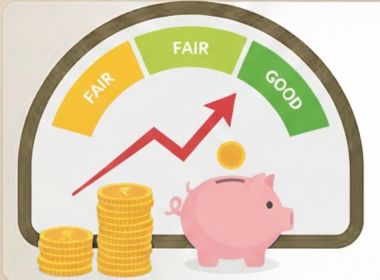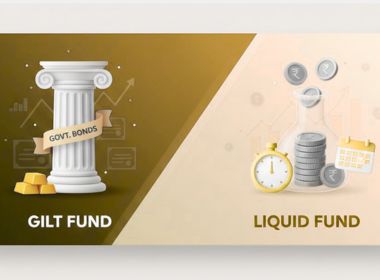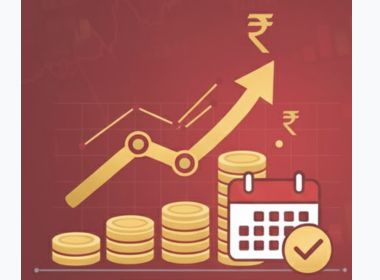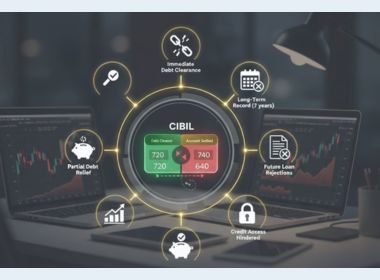Search Suggestions
- Gold Loan
- Money Transfer
- Mutual Funds

CGST vs SGST: Key Differences Every Business Should Know
Goods and Service Tax also known as GST is a tax which applies to the supply of goods and services. It was first suggested by the Kelkar Task Force in 2002 and was later announced in the Union Budget of 2006-07. Eventually, the implementation of GST was later finalized with the parliament passing the Constitutional Amendment Act in September 2016. This was later followed by the State Legislatures and GST was rolled out with effect from 1 July 2017. GST registration is mandatory for a business to run & operate smoothly.
Table of Content
- Components Of GST
- Definition Of SGST And CGST
- Benefits Of GST
- Key Differences Between CGST And IGST
- Features Of CGST And SGST
A business loan at Muthoot Finance is designed to provide the perfect solution for all types of businesses. Retailers, traders, dealers, distributors, wholesalers & service providers must be aware of the types of GST, their differences and their significance to avoid being exploited.
Components Of GST
Before the introduction of GST, there were multiple taxes such as Central Excise, Service Tax, State VAT, etc., however, with the introduction of GST all four components are embedded. These are:
- CGST: Central Goods and Services Tax
- SGST: State Goods and Services Tax
- UTGST: Union Territory Goods and Services Tax
- IGST: Integrated Goods and Services Tax
Definition Of SGST And CGST
Those involved in a business must grasp the notion of what is CGST and how it affects the business. Taxes that are levied on any transaction of goods and services within the state are known as Central Goods and Service Taxes. It is a type of tax that is charged on every intrastate transaction.
With the intervention of CGST, all other forms of central taxes such as the service tax, central excise duty and customs duty have been eliminated. Whereas, SGST is a type of tax levied on intrastate supplies of goods and services by the state government. To help you better understand what is SGST, let’s say you want to sell goods to someone who is from the same state as you. Then you have to pay a GST comprising of both CGST and SGST. In the case of SGST, it eliminates state taxes such as VAT, entertainment tax, sales tax, luxury tax, entry tax, state cess etc.
Suggested Read :10 Tax Saving Tips For Business Owners In India
Benefits Of GST
- GST aims to lower the cost of goods and services.
- Boost & promote the economy.
- Making Indian products and services globally competitive.
- Uniformity in the tax structure.
- Subsuming Central and State indirect taxes into a single tax.
Key Differences Between CGST And IGST
Difference | CGST | SGST |
Meaning | This has eliminated central taxes such as service tax, excise tax etc. | This has eliminated state taxes such as sales tax, luxury tax etc. |
Imposed by or Benefiting Authority | Central Government | State Government |
Applies in | Intrastate | Intrastate |
Determining Factor | The location of the supplier and buyer is from the same state. | The location of the supplier and buyer is from the same state. |
Rate of Tax | Does not exceed 14%. | Does not exceed 14%. |
Features Of CGST And SGST
Dual Tax Structure – Both CGST and SGST operate as dual taxes. It is levied simultaneously on intra-state transactions. Ensuring both the central and state governments collect revenue from the same transaction. This eventually contributes to the overall tax pool on behalf of the respective jurisdictions.
Different Accounting – Accounting for both CGST and SGST is done separately. This is to ensure clarity and transparency in tax utilization and collection. This separation also facilitates accurate tracking of each tax component.
Revenue Sharing – The revenue collected from CGST is monitored and utilized by the Central Government, which they can use for national initiatives and programs. Whereas revenue from SGST is allocated by respective state governments, this allows them to address regional development and other issues.
The implementation of GST is probably one of the biggest tax reforms the world has ever seen. The GST system follows a dual structure that comprises both CGST and SGST. It has ushered uniformity in tax rates as well as formats of registration forms. The advent of GST also aims to maintain transparency while making informed decisions across the country.
CATEGORIES
OUR SERVICES
-

Credit Score
-

Gold Loan
-

Personal Loan
-

Cibil Score
-

Vehicle Loan
-

Small Business Loan
-

Money Transfer
-

Insurance
-

Mutual Funds
-

SME Loan
-

Corporate Loan
-

NCD
-

PAN Card
-

NPS
-

Custom Offers
-

Digital & Cashless
-

Milligram Rewards
-

Bank Mapping
-

Housing Finance
-

#Big Business Loan
-

#Gold Loan Mela
-

#Kholiye Khushiyon Ki Tijori
-

#Gold Loan At Home
-

#Sunherisoch
RECENT POSTS

Understanding KDM Gold and Why it’s Banned
Know More
How BNPL Affects Your Credit Score
Know More
What is a Cheque and its Different Types in India?
Know More
Benefits of Paying Your EMIs on Time: Why Timely Payments Matter
Know More
A Complete Guide to Report Online Fraud
Know More
How does a Personal Loan Affect your Credit Score?
Know More
Gilt Fund vs Liquid Fund: Full Form, Meaning & SIP Guide
Know More
XIRR in Mutual Funds & SIP: Full Form, Meaning, Formula and How to Calculate
Know More
7 Key Factors to Consider Before Taking an SME Loan
Know More
Difference Between Black Gold and Gold: Everything You Need to Know
Know MoreFIN SHORTS

What Are Co-Pay and Deductibles in Insurance Policies?
Know More
Should You Take a Loan Against Your Mutual Fund or SIP?
Know More
Top 5 Best Mid-Cap Mutual Funds to Watch in 2026
Know More
Are Personal Loans Right for Retirees? Key Points to Consider
Know More
What Happens to a Personal Loan After the Borrower Dies?
Know More
Best Loan Choices for Credit Scores of 580 and Below
Know More
7 Reasons Why a Gold Loan Is the Best Option for Small Businesses
Know More
10 Reasons Why People in India Prefer Physical Gold
Know More
Real Estate vs Gold: Which Is a Better Investment in India?
Know More
10 Common Mistakes That Make Investors Lose Money in Mutual Funds
Know More
10 Reasons Why Gold Has So Much Appeal in Uncertain Times
Know More
7 Ways Settling Debt Can Impact Your CIBIL Score
Know More- South +91 99469 01212
- North 1800 313 1212





